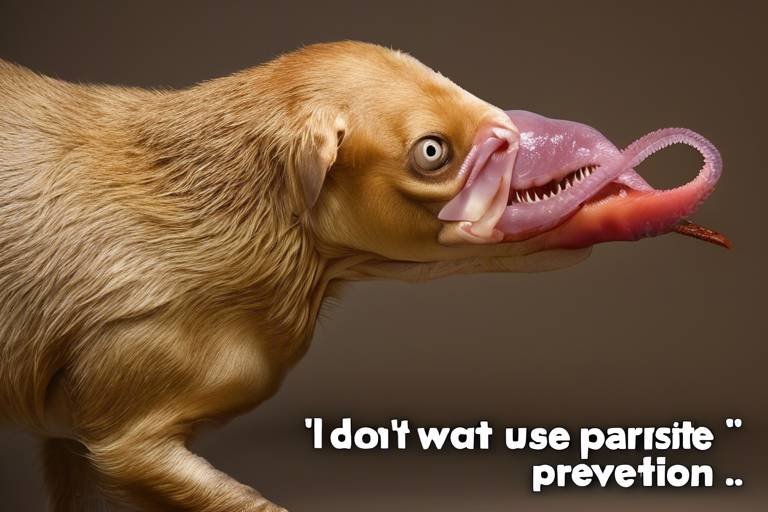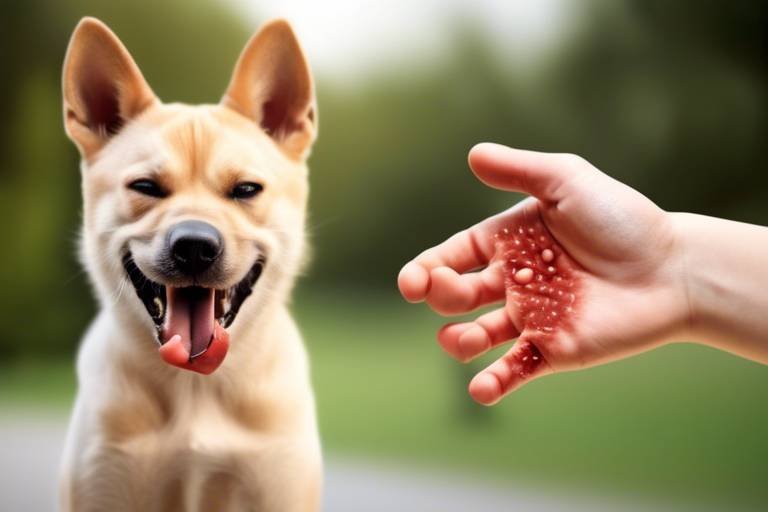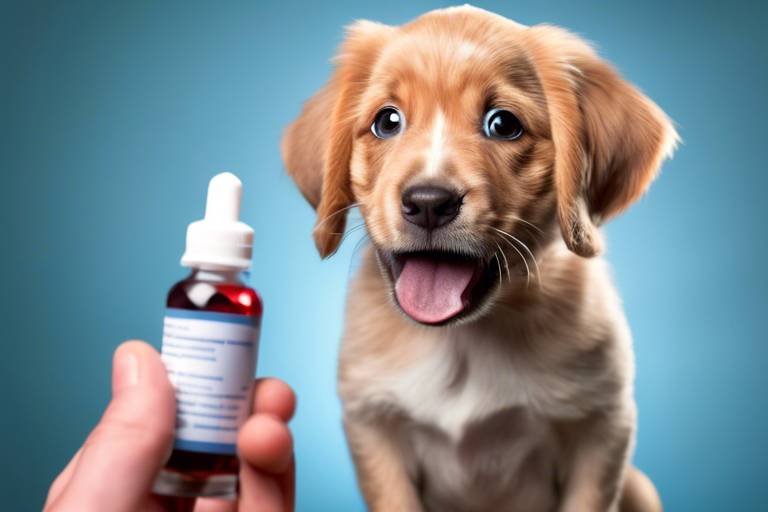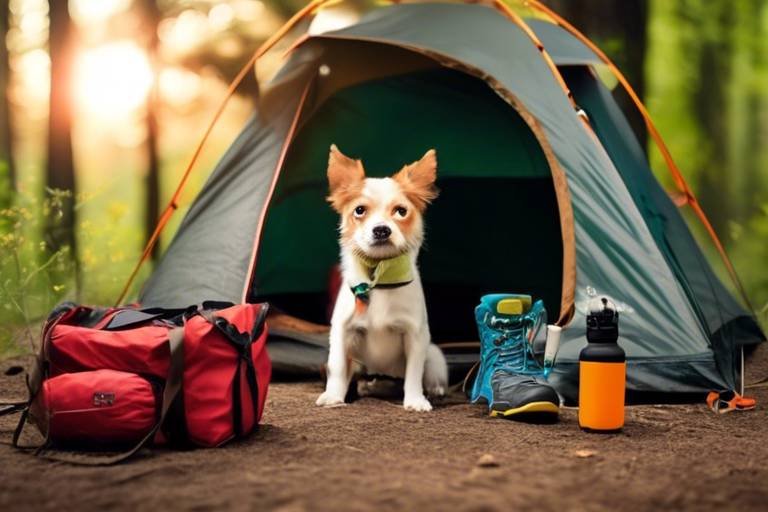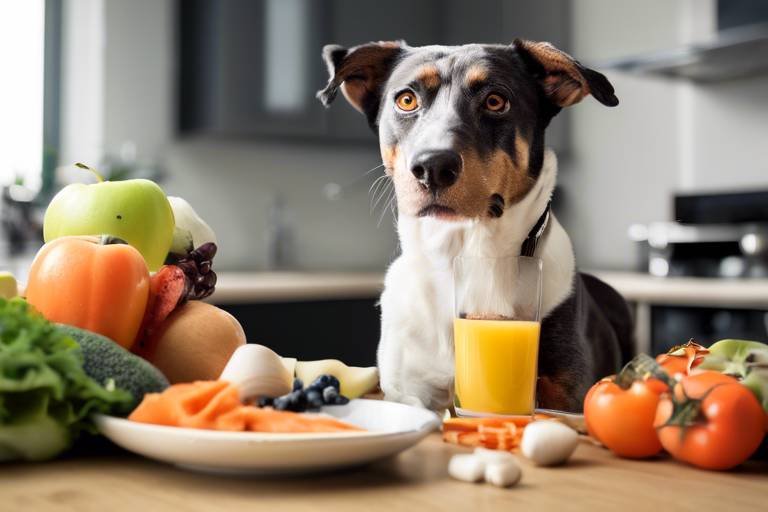How to Keep Your Pet Safe Around Other Animals
As a pet owner, ensuring the safety of your furry friend is a top priority, especially when they encounter other animals. The world can be a big, unpredictable place, filled with all sorts of creatures, some friendly and some not so much. So, how do you navigate this maze to keep your pet safe? The answer lies in understanding animal behavior, employing effective socialization techniques, and being prepared for emergencies. In this article, we will explore essential strategies and tips that will not only help you recognize risks but also create a secure environment for your beloved pet.
Recognizing the body language and signals of different animals is crucial in preventing conflicts. Just like us, animals communicate their feelings through their actions. For instance, a dog that’s wagging its tail might seem friendly, but if the tail is held high and stiff, it could indicate agitation or aggression. Similarly, a cat with flattened ears is likely feeling threatened. Understanding these signals can help you interpret your pet's interactions with others and prevent potential conflicts before they escalate.
Proper socialization is key to a well-adjusted pet. Introducing your pet to other animals in a controlled manner can ensure positive experiences and reduce anxiety. Think of socialization like teaching a child how to interact with others; it requires patience and practice. Start by allowing your pet to observe other animals from a distance, gradually closing the gap as they become more comfortable. This process not only builds confidence but also fosters a sense of security.
Taking a slow approach when introducing your pet to new animals can help ease tension. Imagine throwing a child into a pool without teaching them how to swim; it’s overwhelming and can lead to fear. Instead, introduce your pet to new friends gradually. Begin with short interactions, keeping both animals on a leash, and slowly increase the duration as they become more comfortable with each other. This method can significantly reduce the likelihood of a negative encounter.
Designating safe areas for your pet can provide them with a retreat during stressful encounters. Just like we need our personal space, pets also benefit from having a sanctuary where they can feel secure. This could be a cozy corner in your home or a specific spot in the yard. Equip this space with their favorite toys, blankets, and even some treats. Whenever they feel overwhelmed, they can retreat to this safe zone, allowing them to decompress and regain their confidence.
Always supervising your pet during interactions with other animals is essential. Think of yourself as the lifeguard at a pool; your job is to ensure everyone is safe. Be vigilant and ready to intervene if you notice any signs of distress or aggression. This could mean separating the animals or redirecting their attention to something more positive. Your presence can make a significant difference in how your pet reacts to others.
Understanding when your pet is feeling threatened or uncomfortable can prevent dangerous situations. Keep an eye out for key warning signs, such as growling, baring teeth, or a stiff posture. These behaviors indicate that your pet may not be comfortable with the situation. By recognizing these signs early on, you can take action to prevent escalation and ensure a safer environment for everyone involved.
Keeping your pet healthy is vital for their safety around other animals. A healthy pet is less likely to engage in risky behavior and more capable of handling stressful situations. Regular vaccinations and parasite prevention are crucial components of your pet’s health care routine. Make sure to consult your veterinarian about the vaccinations your pet needs and any preventive measures you should take against parasites.
Routine veterinary visits ensure your pet is healthy and up-to-date on vaccinations. Just like humans need regular check-ups, so do our pets. These visits can help catch potential health issues before they become serious problems. Additionally, your vet can provide guidance on how to keep your pet safe during interactions with other animals, including any specific health concerns related to their breed or age.
Effective parasite control is crucial to prevent the spread of diseases. Fleas, ticks, and worms can pose significant risks not only to your pet but also to other animals they may encounter. Implement a robust parasite prevention plan, which may include regular treatments and preventive medications. Discuss options with your veterinarian to find the best solutions for your pet’s needs.
Being prepared for emergencies can make a significant difference in your pet's safety. Just like we have fire drills or emergency plans, having a strategy in place for your pet can save lives. Familiarize yourself with local animal control resources and have a first-aid kit ready for your furry friend. Being proactive can help you respond effectively in case of an unexpected encounter with other animals.
Understanding basic first aid can help you respond effectively to injuries. Just like humans, pets can get hurt, and knowing how to handle minor injuries can prevent further complications. Familiarize yourself with techniques such as how to clean a wound, how to apply pressure to stop bleeding, and when to seek veterinary assistance. Having this knowledge can make you feel more confident and prepared.
Having a clear plan in place can help you act quickly during emergencies. Create a checklist of steps to follow in case of an unexpected encounter with other animals. This could include how to secure your pet, whom to contact, and where to go for help. Share this plan with family members or anyone who may be responsible for your pet. The more prepared you are, the safer your pet will be.
- What should I do if my pet shows aggression towards another animal?
It's essential to remain calm. Try to remove your pet from the situation safely without escalating the aggression. Consider consulting a professional trainer for further assistance.
- How can I tell if my pet is anxious around other animals?
Signs of anxiety may include excessive barking, hiding, trembling, or attempts to escape. Recognizing these signs early can help you intervene.
- Is it necessary to socialize my pet with other animals?
Yes, socialization is crucial for your pet's mental health and well-being. It helps them learn how to interact appropriately with other animals and reduces fear-based reactions.

Understanding Animal Behavior
When it comes to ensuring your pet's safety around other animals, understanding their behavior is absolutely crucial. Just like humans, animals communicate through body language and vocalizations, and being able to interpret these signals can help you prevent conflicts before they escalate. For instance, did you know that a wagging tail doesn’t always mean a dog is happy? In fact, a fast wagging tail can indicate excitement or even aggression, depending on the context. This is why it’s essential to observe not just your pet’s behavior but also that of other animals they encounter.
Many pets exhibit specific behaviors that can signal aggression or fear. For example, a cat that hisses or swats is clearly feeling threatened, while a dog that growls or shows its teeth is trying to assert dominance or protect itself. Recognizing these signs can be the difference between a peaceful interaction and a potential disaster. Below are some common behaviors to watch for:
- Aggressive Postures: Raised hackles, bared teeth, and direct staring can indicate aggression.
- Fearful Behaviors: Cowering, hiding, or backing away suggest that an animal feels threatened.
- Playful Signals: A relaxed body, wagging tail, and play bow (front legs stretched out) usually indicate a desire to play.
Understanding these signals is not just about keeping your pet safe; it’s also about fostering positive interactions. For example, if you notice that another dog is displaying signs of aggression, you can intervene before a confrontation occurs. Similarly, if your pet is showing signs of anxiety, you can take steps to comfort them. Creating a harmonious environment is all about paying attention to the subtle cues that animals give off.
Moreover, different species have their own unique ways of communicating. For instance, while dogs might bark to express excitement or alertness, cats may use meows or purrs to get your attention. Being aware of these differences can help you navigate interactions more smoothly. It’s akin to learning a new language; the more you understand, the better your communication will be. So, the next time your furry friend interacts with another animal, take a moment to observe the body language and vocalizations involved. It’s a fascinating world of communication that can provide valuable insights into your pet's feelings and intentions.
By taking the time to understand animal behavior, you not only enhance your pet's safety but also enrich their social experiences. Remember, the goal is to create a secure environment where your pet can thrive and enjoy their interactions with other animals. So, keep your eyes peeled and your instincts sharp!
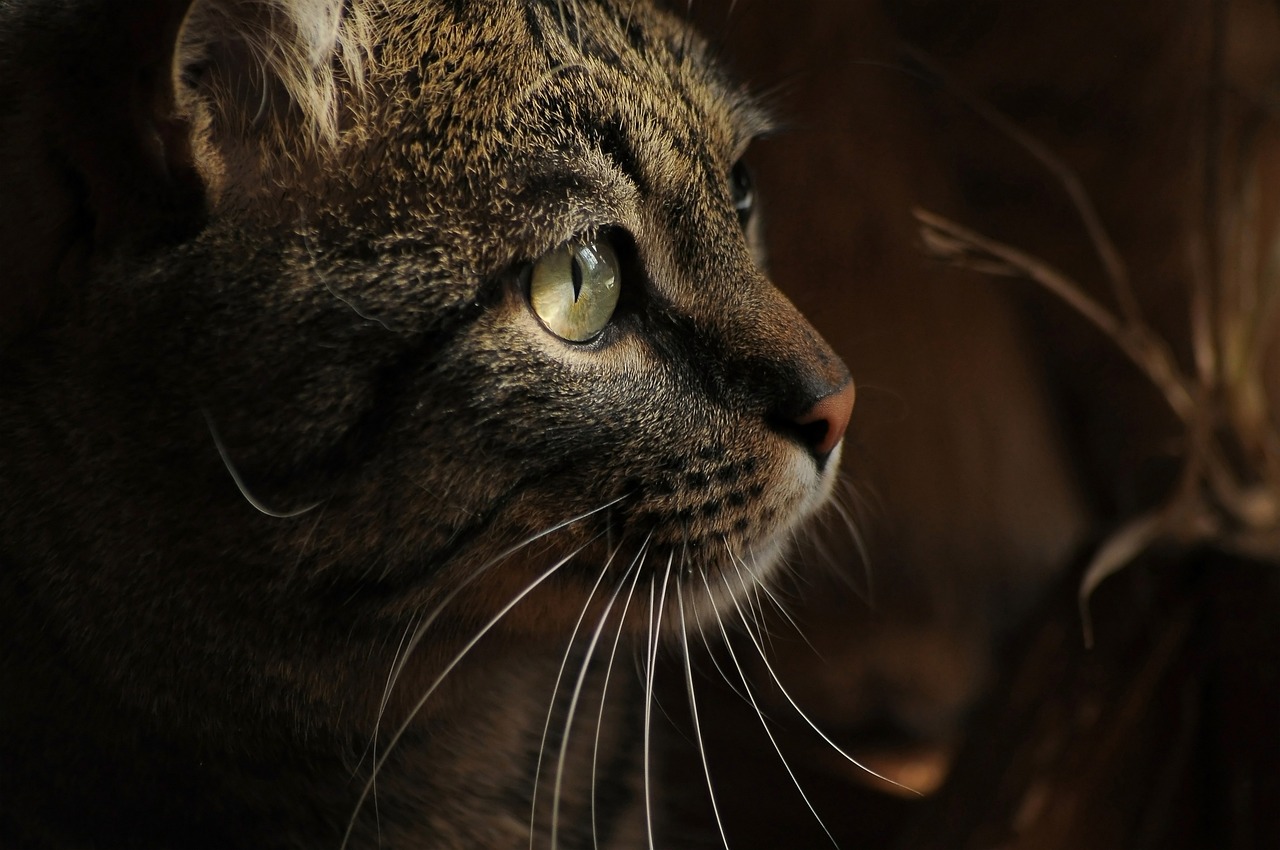
Socialization Techniques
Socializing your pet is not just a fun activity; it’s a fundamental aspect of their development and well-being. Imagine your pet as a little sponge, soaking up experiences and learning how to navigate the world around them. Proper socialization can prevent behavioral issues and ensure that your furry friend is comfortable and confident in various environments. So, how do you go about this? Let’s dive into some effective methods for introducing your pet to other animals in a controlled manner, ensuring positive experiences and reducing anxiety.
First and foremost, gradual introductions are essential. Just like humans, pets can feel overwhelmed when thrown into new situations. Think of it as throwing a child into a crowded playground without any prior exposure. Instead, you want to ease them in. Start by allowing your pet to observe other animals from a distance. This helps them get acclimated without feeling threatened. As they become more comfortable, you can slowly decrease the distance, allowing them to interact in a controlled environment.
When it comes to gradual introductions, the key is to take your time. Here’s a simple approach to follow:
- Step 1: Choose a neutral location for the first meeting. This could be a park or a backyard that neither pet considers their territory.
- Step 2: Keep both pets on a leash to maintain control. This way, you can prevent any sudden movements that might escalate tensions.
- Step 3: Allow them to sniff each other from a safe distance. Observe their body language closely—are they relaxed or tense?
- Step 4: If all goes well, gradually bring them closer together, rewarding both pets with treats and praise for calm behavior.
- Step 5: If at any point the interaction seems to escalate, don’t hesitate to separate them and try again later.
Another important aspect of socialization is creating safe spaces for your pet. These are areas where they can retreat when feeling overwhelmed. Think of it as their personal sanctuary. You can create a safe space by designating a specific room or corner in your home with their favorite toys, bedding, and perhaps a blanket that smells like you. This is crucial during interactions with other animals, as it gives your pet a sense of security and control over their environment.
Always remember that supervised interactions are vital. You wouldn’t let a toddler play unsupervised with unfamiliar kids, right? The same principle applies here. Always keep a watchful eye on your pet when they’re interacting with other animals. This vigilance allows you to intervene if things start to go south. If you notice signs of discomfort or aggression—like growling, baring teeth, or a stiff posture—be ready to step in and separate the pets if necessary. Your goal is to foster positive experiences, and sometimes that means knowing when to call it a day.
In summary, socializing your pet is a journey that requires patience, observation, and a bit of creativity. By using gradual introductions, creating safe spaces, and supervising interactions, you can help your furry friend navigate the complex world of animal relationships with confidence and ease. Remember, the more positive experiences they have, the better equipped they’ll be to handle future encounters. So, get out there and start socializing!
Q: How long does it take to socialize my pet?
A: The time it takes varies by pet. Some may adjust quickly, while others might need weeks or even months. Patience is key!
Q: What if my pet shows aggression during introductions?
A: If your pet displays aggression, it’s important to separate them immediately and try again later. Consider consulting a professional trainer for guidance.
Q: Should I socialize my pet with all types of animals?
A: It’s best to introduce your pet to animals that are similar in size and temperament to reduce the risk of negative interactions.
Gradual Introductions
When it comes to introducing your beloved pet to new furry friends, patience is not just a virtue; it's a necessity! Think of it like preparing a delicate soufflé—if you rush it, it could collapse. Gradual introductions are all about easing your pet into new social circles, ensuring they feel secure and comfortable. Start by choosing a neutral location for the first meeting, somewhere neither pet considers 'home.' This can help reduce territorial behaviors that might lead to conflict.
Begin with short, controlled interactions. Allow your pets to see each other from a distance, perhaps through a fence or a barrier, so they can get used to each other's presence without any direct contact. This step is like letting them peek at a delicious treat before you let them have it! If they seem calm and curious, you can gradually decrease the distance between them. Always keep a close eye on their body language—are they relaxed, or do they seem tense? Look for signs of comfort, such as wagging tails or playful behavior, which indicate a positive vibe.
As you progress with the introductions, it’s essential to keep the sessions short. You wouldn't want to overwhelm them with a long playdate right off the bat. Start with just a few minutes and gradually increase the time as they become more comfortable with each other. You can even use treats to create positive associations. Whenever they behave well around each other, reward them! This technique reinforces good behavior and helps build a friendly rapport.
Remember, every pet is unique, and some may take longer to warm up than others. For those pets that are a bit more anxious or fearful, consider using calming aids like pheromone diffusers or anxiety wraps to help them feel more at ease. If one pet shows signs of stress, such as growling or hiding, it’s crucial to take a step back and give them some space. Just like we all need our personal bubble sometimes, pets do too!
In summary, gradual introductions are a fantastic way to help your pet make new friends without the stress of sudden encounters. By taking your time, observing their behavior, and rewarding positive interactions, you can foster a safe environment for your pets to socialize. Remember, the goal is to create a bond that can blossom into a beautiful friendship, just like planting a seed and watching it grow into a vibrant flower!
- How long should I wait before introducing my pet to another animal? It’s best to wait until both pets are calm and comfortable in their own environments. Start with visual introductions before moving to direct contact.
- What signs indicate that my pet is uncomfortable during introductions? Look for signs such as growling, barking, cowering, or trying to escape. If you notice any of these, it’s time to separate them and try again later.
- Can I use treats to help with introductions? Absolutely! Treats can create positive associations between the animals, helping to ease tension and encourage friendly behavior.
- How can I tell if the introduction is going well? If both pets are relaxed, wagging their tails, and showing interest in each other, it’s a good sign that the introduction is going well.
Creating Safe Spaces
When it comes to ensuring your pet feels secure, is not just a luxury—it's a necessity. Imagine your pet as a little island in a sea of unfamiliar animals, where they can retreat to when the waves of anxiety start crashing in. A designated safe zone can be a haven for your furry friend, allowing them to feel more relaxed during stressful encounters. But how do you go about establishing these spaces? Let's dive into the essentials!
First and foremost, you want to choose a location that is quiet and comfortable. This could be a cozy corner of your home, a specific room, or even a dedicated area in your yard. The key is to ensure that this space is free from the chaos that other animals might bring. You can enhance this safe zone by adding your pet's favorite blanket, toys, and even some of your own clothing. The familiar scents can work wonders in making them feel at ease.
Next, consider using physical barriers to define the safe space. Baby gates or pet pens can be excellent options for keeping your pet in their comfort zone while still allowing them to observe the world around them. This way, they can feel secure while still being part of the action, which can help them gradually adjust to new experiences without feeling overwhelmed.
It's also essential to train your pet to recognize this area as a safe retreat. You can do this through positive reinforcement. Whenever your pet enters their safe space, reward them with treats or praise. This will help them associate the area with positive feelings, making it a go-to spot when they need a break.
Lastly, it's important to monitor your pet's behavior. If you notice signs of stress or anxiety during interactions with other animals, encourage them to retreat to their safe space. This not only helps them decompress but also reinforces the idea that they have a sanctuary to rely on. Remember, the goal is to create an environment where your pet feels empowered to seek safety whenever they need it.
- What should I include in my pet's safe space?
You should include their favorite blankets, toys, and items that smell like you to make them feel more comfortable. - How can I tell if my pet needs to retreat?
Look for signs of stress such as panting, whining, or hiding. If you notice these behaviors, encourage them to go to their safe space. - Can I use a crate as a safe space?
Absolutely! A crate can serve as an excellent safe space if your pet is comfortable with it. Just make sure it’s properly introduced and a positive experience.
Supervised Interactions
When it comes to ensuring your pet's safety around other animals, supervision is key. Just like a parent keeps an eye on their child at a playground, you need to be vigilant when your furry friend interacts with others. This not only helps in preventing potential conflicts but also allows you to intervene quickly if necessary. Imagine a scenario where your dog is meeting a new friend at the park; without supervision, things could escalate quickly if either pet feels threatened or uncomfortable.
During these interactions, watch for cues from both your pet and the other animal. Are they wagging their tails or showing signs of aggression? Understanding these signals can help you gauge the situation. For instance, if your dog is barking excessively or the other animal is growling, it’s a clear sign that you need to step in. By being present, you can redirect your pet’s attention, or even separate them if things start to go awry.
It's also essential to create a calm environment during these interactions. If the surroundings are noisy or chaotic, it can heighten anxiety levels in pets. Choose a quiet area for introductions, ideally one that both animals are familiar with. This familiarity can help ease tension and make the interaction smoother. Additionally, consider using a leash for your pet during the first few meetings. This not only gives you more control but also helps your pet feel secure, knowing they have your support.
Another important aspect of supervised interactions is knowing when to call it a day. If you notice that either animal is showing signs of stress or discomfort, it’s best to end the meeting on a positive note. This could mean taking a break and allowing both pets to calm down before trying again later. Ending on a good experience can help build trust and improve future interactions.
In conclusion, are crucial for your pet's safety and well-being. By being attentive, creating a calm environment, and knowing when to step in, you can foster positive experiences for your furry friend. Remember, the goal is to help your pet feel comfortable and secure around other animals, paving the way for future friendships and adventures.
- Why is supervision important during pet interactions? Supervision allows you to monitor body language and intervene if necessary, preventing potential conflicts.
- How can I tell if my pet is uncomfortable? Look for signs such as growling, barking, or a tucked tail, which indicate discomfort or fear.
- What should I do if a fight breaks out? Remain calm and try to separate the animals using a distraction or a command. Avoid putting yourself in harm's way.
- Can I let my pet off-leash during interactions? It's advisable to keep your pet on a leash during initial introductions until you are confident in their behavior.
Recognizing Warning Signs
When it comes to ensuring your pet's safety around other animals, being able to recognize warning signs is absolutely crucial. Just like humans, animals communicate their feelings through body language and vocalizations. Understanding these signals can help you intervene before a situation escalates into a conflict or worse. Imagine you're at a party, and someone is getting increasingly agitated; wouldn’t you want to step in before things get out of hand? The same principle applies here.
One of the first things to look for is posture. A dog that is standing stiffly, with its tail raised and ears perked, might be feeling threatened or aggressive. Conversely, a dog that is cowering, with its tail tucked between its legs, is likely scared and may react unpredictably. Cats, too, exhibit clear signs of discomfort. If a cat's ears are pinned back against its head, or if it is swatting at another animal, these are clear indicators that it feels threatened.
Vocalizations are another important factor. A dog that is growling or barking excessively may be sending a warning signal to other animals, indicating that it feels threatened or is asserting dominance. On the other hand, a high-pitched whine can indicate fear or anxiety. Cats may hiss or growl when they feel cornered or threatened, and these sounds should never be ignored.
Additionally, facial expressions can provide vital clues. A dog that shows its teeth, even if it’s not actively growling, is likely feeling defensive. Cats will often narrow their eyes or exhibit dilated pupils when they’re stressed or scared. Paying close attention to these subtle cues can make all the difference in preventing a potential altercation.
Some common warning signs to watch for include:
- Stiff body posture: Indicates tension and potential aggression.
- Tail position: A raised tail can mean excitement or aggression, while a tucked tail indicates fear.
- Vocalizations: Growling, hissing, or excessive barking are all red flags.
- Facial expressions: Showing teeth or dilated pupils can signal distress.
By being vigilant and paying attention to these warning signs, you can help create a safer environment for your pet. It’s like being a detective; you’re piecing together the clues to understand what's really going on in your furry friend’s world. Remember, the goal is to ensure that both your pet and others can coexist peacefully, so trust your instincts and be ready to step in when necessary.
Q: What should I do if I notice my pet showing warning signs around other animals?
A: If you observe warning signs, it's best to remove your pet from the situation calmly and without escalating tension. Distract them with a toy or treat, and create some distance from the other animal.
Q: How can I help my pet feel more comfortable around other animals?
A: Gradual socialization, positive reinforcement, and creating safe spaces can help your pet feel more at ease. Always ensure that introductions are slow and controlled.
Q: Are there specific warning signs that differ between dogs and cats?
A: Yes, while both species exhibit signs of fear and aggression, their body language can differ. For instance, dogs may growl or bark, while cats may hiss or swat. Understanding these differences is key to effective communication.
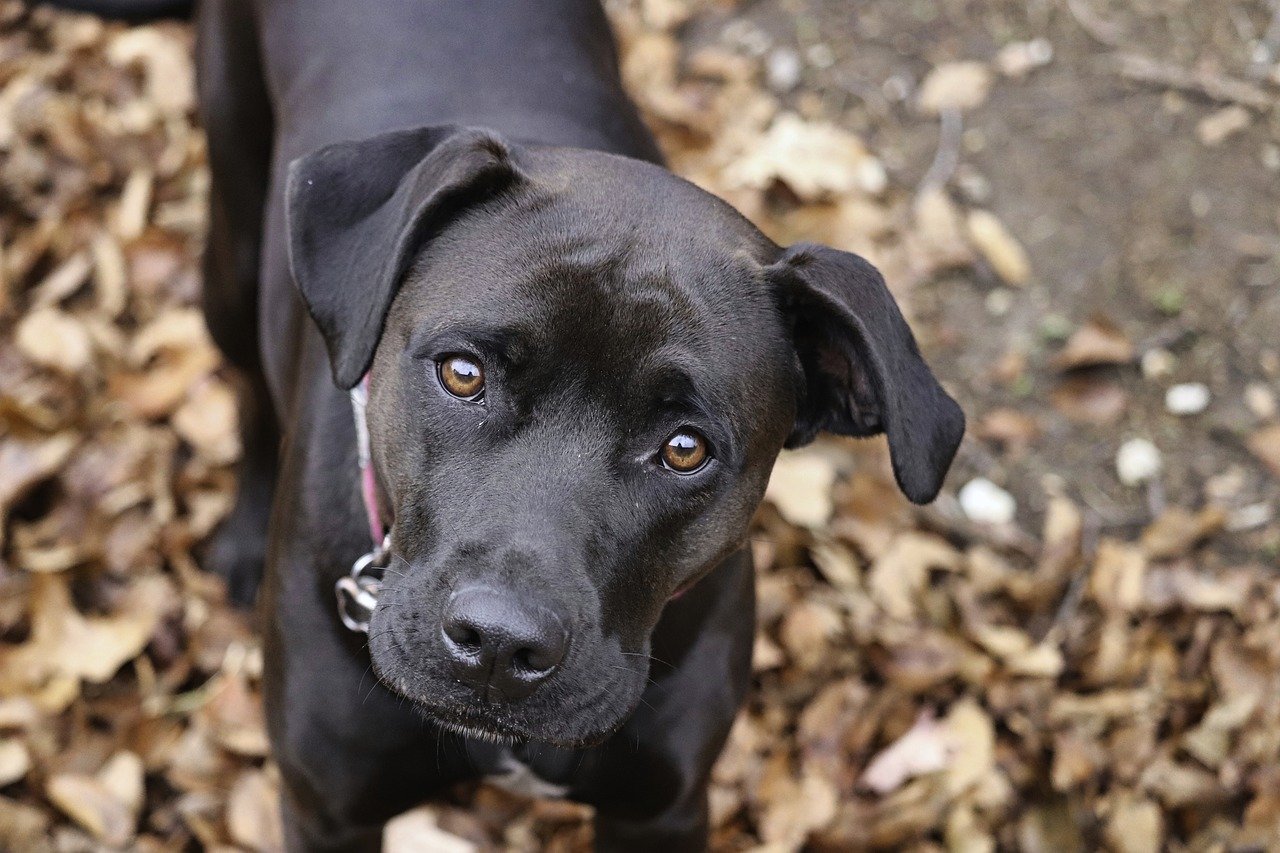
Health Considerations
Keeping your pet healthy is not just about ensuring they look good; it’s about safeguarding their overall well-being, especially when they interact with other animals. Healthy pets are less likely to contract diseases, which is crucial when they come into contact with other furry friends. Think of it this way: just like you wouldn’t want to go to a party feeling under the weather, your pet deserves to feel their best when meeting new pals. Regular veterinary check-ups are essential for maintaining your pet's health and can help catch any potential issues before they become serious.
Moreover, vaccinations play a pivotal role in protecting your pet from various infectious diseases that can be transmitted during interactions with other animals. For instance, diseases like rabies and parvovirus can spread quickly in environments where animals gather. Keeping your pet’s vaccinations up to date is like putting on a protective shield; it helps keep them safe from unseen threats. In addition to vaccinations, you should also consider parasite prevention, as fleas, ticks, and worms can pose significant health risks.
It's essential to be proactive about parasite control. Not only can these pesky critters cause discomfort, but they can also transmit serious diseases to your pet and even to you. For example, ticks can carry Lyme disease, which can lead to long-term health issues if not treated promptly. To maintain a healthy environment for your pet, consider the following:
- Regularly check your pet for signs of fleas and ticks, especially after outdoor activities.
- Consult your veterinarian about the best parasite prevention treatments available.
- Keep your yard clean and free from standing water to reduce the risk of pests.
Overall wellness is another crucial aspect of your pet's health. This includes providing a balanced diet, ensuring they get enough exercise, and giving them plenty of mental stimulation. Just like us, pets need a combination of physical and mental activities to stay fit and happy. A well-balanced diet tailored to your pet's specific needs can help them maintain a healthy weight and boost their immune system, making them less susceptible to illnesses.
In summary, prioritizing your pet's health is vital for their safety around other animals. Regular vet visits, keeping up with vaccinations, and effective parasite control are all essential components of a comprehensive health strategy. By taking these steps, you can ensure that your furry friend is not only safe but also thriving in their interactions with others.
Q1: How often should I take my pet to the vet?
A1: It's generally recommended to take your pet for a check-up at least once a year. However, puppies and kittens may require more frequent visits.
Q2: What vaccines does my pet need?
A2: Vaccines vary by species and lifestyle. Common vaccines include rabies, distemper, and bordetella. Consult your veterinarian for a tailored vaccination schedule.
Q3: How can I tell if my pet has parasites?
A3: Look for signs such as excessive scratching, biting at their skin, or visible fleas and ticks. Other symptoms may include weight loss and lethargy.
Q4: What should I do if my pet gets injured during an encounter with another animal?
A4: Keep calm, assess the injury, and apply basic first aid if necessary. Always consult your vet for further evaluation and treatment.
Regular Vet Check-ups
When it comes to keeping your pet safe around other animals, regular veterinary check-ups are not just a good idea—they're a necessity! Imagine your pet as an athlete; just like athletes need regular physicals to ensure they're in top shape, your furry friend requires routine health assessments to catch any potential issues before they escalate. During these visits, your vet will conduct a comprehensive examination, checking everything from your pet's weight and coat condition to their heart and lungs. Regular check-ups help to ensure that your pet is not only healthy but also up-to-date on vaccinations that protect them from a variety of diseases that could be transmitted by other animals.
But what exactly happens during these check-ups? Well, your vet will typically perform the following:
- Conduct a thorough physical examination
- Administer necessary vaccinations
- Check for signs of parasites or infections
- Discuss any behavioral changes or concerns you might have
By keeping these appointments, you're not just ensuring your pet's health; you're also creating a safe environment for them when interacting with other animals. If your pet is healthy, they are less likely to be aggressive or fearful, which can lead to safer interactions. Additionally, some pets may have underlying health issues that could make them more vulnerable during encounters with other animals. Regular vet visits can help identify these issues early, allowing you to take appropriate action.
Furthermore, it’s important to remember that some pets may require more frequent visits than others. For instance, pets with chronic conditions or those who are elderly may need to see the vet more often. Keeping an open line of communication with your veterinarian will help you determine the best schedule for your pet’s check-ups.
In summary, making regular vet check-ups a priority is one of the best ways to ensure your pet's safety and well-being. Think of it as a shield that protects them from potential health threats, allowing them to confidently explore the world around them. So, don’t wait for a problem to arise—schedule that appointment today!
Parasite Control
When it comes to keeping your pet safe around other animals, one of the most critical aspects is effective . Parasites like fleas, ticks, and worms can not only harm your pet but also pose health risks to other animals and even humans. Imagine your furry friend, happily playing in the park, only to come home with a bunch of uninvited guests! It's a situation that can easily be avoided with the right preventive measures.
First and foremost, it's essential to understand the different types of parasites that can affect your pet. Fleas are notorious for causing itching and discomfort, while ticks can transmit serious diseases such as Lyme disease. Intestinal worms, on the other hand, can lead to digestive issues and even more severe health problems. By being aware of these threats, you can take proactive steps to protect your pet.
Regular vet visits are crucial in establishing a solid parasite control plan. Your veterinarian can recommend appropriate treatments based on your pet's lifestyle and health status. For example, if your pet spends a lot of time outdoors, they may require more frequent treatments. Additionally, your vet can perform routine checks to ensure your pet remains parasite-free.
Now, let's talk about some effective methods for parasite control. Here are a few options:
- Topical Treatments: These are applied directly to your pet's skin and can provide long-lasting protection against fleas and ticks.
- Oral Medications: These can be given monthly and are often very effective at controlling internal parasites.
- Collars: Flea and tick collars can be a convenient option, offering continuous protection.
- Environmental Control: Regularly cleaning your home and yard can help eliminate potential breeding grounds for parasites.
It's also important to monitor your pet for any signs of parasite infestation. Symptoms can include excessive scratching, lethargy, or changes in appetite. If you notice any of these signs, don't hesitate to contact your veterinarian for advice. The sooner you act, the easier it will be to manage the situation.
In addition to these preventive measures, consider incorporating a healthy diet and regular exercise into your pet's routine. A strong immune system can help fend off parasites and ensure your pet stays happy and healthy. Remember, a well-cared-for pet is less likely to attract parasites in the first place!
In summary, effective parasite control is a vital part of keeping your pet safe around other animals. By staying informed, regularly visiting the vet, and using appropriate treatments, you can protect your furry friend and ensure they enjoy their interactions with other animals without the worry of parasites lurking in the background.
Q: How often should I treat my pet for parasites?
A: It depends on the type of treatment and your pet's lifestyle. Consult with your veterinarian for a personalized schedule.
Q: Can parasites affect humans?
A: Yes, some parasites can be transmitted to humans, so it's crucial to keep your pet treated and healthy.
Q: What are the signs of a parasite infestation?
A: Look for symptoms such as scratching, lethargy, weight loss, or changes in appetite. If you notice any of these, consult your vet.
Q: Are natural remedies effective for parasite control?
A: Some natural remedies may help, but they are often less effective than veterinary-approved treatments. Always consult your vet before trying new methods.

Emergency Preparedness
When it comes to keeping your pet safe, being prepared for emergencies is like having a superhero cape ready to go at a moment's notice. Imagine finding yourself in a situation where your furry friend encounters an aggressive animal or gets injured unexpectedly. Panic can set in quickly, but having a solid emergency plan can make all the difference. It's essential to anticipate potential risks and take proactive steps to ensure your pet's safety. After all, just like we wouldn’t venture into a storm without an umbrella, we shouldn’t let our pets face the unknown unprepared.
First and foremost, understanding basic first aid for pets is a crucial part of your emergency preparedness strategy. You wouldn't want to be caught off guard if your pet gets a cut or a scrape while out on a walk. Knowing how to clean a wound, apply a bandage, or perform CPR can be lifesaving. Consider attending a pet first aid course; it’s not just informative, but also empowering. Plus, it gives you the confidence to handle emergencies calmly. Here’s a quick overview of essential first aid techniques:
| First Aid Technique | Description |
|---|---|
| Wound Cleaning | Use sterile saline solution to clean the wound gently. |
| Bandaging | Apply a non-stick bandage securely, but not too tight. |
| CPR | For pets, perform chest compressions and rescue breaths as needed. |
In addition to knowing first aid, having an emergency plan tailored for your pet is vital. Think of it as a roadmap for navigating unexpected situations. This plan should include details like your vet's contact information, a list of emergency animal hospitals, and what to do if you encounter a stray or aggressive animal. Make sure to keep this information accessible—perhaps on your fridge or in your pet’s travel bag. You never know when you might need it!
Moreover, it’s smart to prepare an emergency kit for your pet. This kit should contain all the essentials your pet might need during a crisis. Consider including:
- First aid supplies
- Medications
- Food and water
- Leash and harness
- Identification tags
- Comfort items like a favorite toy or blanket
By having an emergency kit ready, you can ensure that your pet has the necessities to stay safe and comfortable, even in stressful situations. Remember, it’s not just about having the supplies; it’s about knowing how to use them effectively. Practice makes perfect, so don’t hesitate to run through your emergency plan with your family and pets. The more familiar everyone is with the plan, the smoother things will go when the unexpected happens.
Lastly, always keep a calm demeanor during emergencies. Animals can sense our stress, and if you panic, your pet might panic too. By staying composed, you can help your furry friend feel more secure. In the end, being prepared is all about reducing anxiety and ensuring your pet's well-being. So, take the time to plan, practice, and equip yourself with knowledge—it’s the best way to keep your beloved pet safe.
Q: What should I do if my pet is attacked by another animal?
A: Stay calm and assess the situation. If it's safe, intervene to separate the animals using a loud noise or a physical barrier. Afterward, check your pet for injuries and seek veterinary care if needed.
Q: How often should I update my emergency plan?
A: Review and update your emergency plan at least once a year or whenever there are changes in your pet's health, routine, or living situation.
Q: Where can I find resources for pet first aid training?
A: Many local animal shelters, veterinary clinics, and community centers offer pet first aid courses. You can also find online resources and videos to help you learn.
First Aid Basics
When it comes to our beloved pets, being prepared for emergencies is not just a good idea—it's a necessity. Accidents can happen at any time, and knowing some basic first aid can mean the difference between life and death. Imagine your furry friend getting into a tussle with another animal or having an unexpected fall; how would you react? Would you be ready to spring into action? Understanding first aid basics will equip you with the knowledge you need to respond effectively and calmly in those critical moments.
First, familiarize yourself with the most common injuries and health issues that pets may encounter. These can include cuts, bites, choking, or even allergic reactions. For instance, if your pet gets a cut, it’s essential to clean the wound properly to prevent infection. Here’s a quick rundown of first aid steps you should keep in mind:
- Stay Calm: Your pet can sense your anxiety, which may increase their stress.
- Assess the Situation: Determine the nature of the injury before taking action.
- Control Bleeding: Apply pressure with a clean cloth or bandage.
- Keep Your Pet Still: Movement can exacerbate injuries; try to keep them calm and still.
- Seek Veterinary Help: Always follow up with a vet, even for minor injuries.
Another critical aspect of pet first aid is understanding how to handle choking. If your pet is choking, you can perform the Heimlich maneuver, which is similar to how you would help a human. For small dogs, hold them upside down and give a few firm pats on the back. For larger dogs, you may need to position them behind and thrust inward just below the rib cage. It's vital to remain calm and act quickly, as every second counts.
Additionally, having a pet first aid kit at home is a smart move. You should include items like antiseptic wipes, gauze, adhesive tape, and a digital thermometer. Here’s a simple table to help you organize your first aid kit effectively:
| Item | Purpose |
|---|---|
| Antiseptic wipes | To clean wounds and prevent infection. |
| Gauze and bandages | For dressing wounds and controlling bleeding. |
| Adhesive tape | To secure bandages in place. |
| Digital thermometer | To check for fever or abnormal body temperature. |
| Pet-safe pain reliever | For managing minor pain (consult your vet first). |
Lastly, it’s beneficial to take a pet first aid class if available in your area. These classes can provide hands-on experience and teach you how to handle various scenarios. Just like knowing how to swim can save lives, knowing pet first aid can help you be the hero your furry friend needs in times of crisis. Remember, your pet relies on you, and being prepared is the best way to show your love and commitment to their well-being.
Q: What should I do if my pet is bleeding?
A: Apply gentle pressure to the wound with a clean cloth or bandage. If the bleeding doesn’t stop, seek veterinary care immediately.
Q: How can I tell if my pet is choking?
A: Signs include pawing at the mouth, coughing, difficulty breathing, or gagging. If you suspect choking, act quickly to remove the obstruction.
Q: Is it safe to use human first aid supplies on pets?
A: Some human first aid supplies can be used on pets, but always check with your veterinarian first to ensure they are safe and appropriate.
Creating an Emergency Plan
When it comes to keeping your furry friend safe, having a well-thought-out emergency plan is absolutely essential. Think of it as your pet's safety net—a plan that can help you spring into action during those unexpected moments of chaos. Imagine being at the park, and suddenly a stray dog approaches your pet. What do you do? Having a clear plan can make all the difference in keeping your pet safe and sound.
Start by identifying potential emergency scenarios. These could range from encounters with aggressive animals to natural disasters that might require you to evacuate. Once you have a list of possible emergencies, you can tailor your plan to address each situation. For instance, if you live in an area prone to wildfires, your plan should include routes to safety that accommodate your pet. On the other hand, if your pet gets into a tussle with another animal, knowing how to separate them safely is crucial.
Next, it's important to gather essential supplies. Having an emergency kit specifically for your pet can save precious time when every second counts. Here’s a quick list of items you should consider including:
- First aid supplies (bandages, antiseptic wipes, etc.)
- Copy of your pet's medical records
- Food and water for at least three days
- Leash and harness
- Comfort items (toys, blanket, etc.)
Additionally, you should have a designated spot in your home where this kit is stored, easily accessible in case of an emergency. This way, you won’t waste time searching for it when every moment matters. You might even want to practice retrieving the kit with your family members so everyone knows what to do.
Another crucial element of your emergency plan is to ensure anyone who takes care of your pet knows the plan as well. Whether it's a pet sitter, a friend, or a family member, they should be aware of your emergency contacts, the location of the emergency kit, and how to handle your pet in various situations. Communication is key here. You could even create a simple info sheet that outlines your pet's needs and the emergency steps to follow.
Finally, don’t forget to include your pet in your overall family emergency plan. Just like you would for your children, ensure your pet knows where to go and what to do in case of an emergency. Consider practicing drills with your pet, so they become familiar with the routine. It might sound silly, but pets can pick up on cues and can learn to respond to your commands more effectively during high-stress situations.
In summary, creating an emergency plan for your pet is not just a good idea; it’s a necessity. By preparing for the unexpected, you can ensure that your pet remains safe, secure, and calm, no matter what challenges arise. The peace of mind that comes from knowing you’re prepared is worth its weight in gold.
Q: What should I include in my pet's emergency kit?
A: Your pet's emergency kit should include first aid supplies, food and water for at least three days, a leash and harness, comfort items, and a copy of their medical records.
Q: How can I help my pet feel secure during an emergency?
A: Familiarize your pet with your emergency plan and practice drills. Having comfort items, like their favorite toy or blanket, can also help ease their anxiety.
Q: Should I have a separate emergency plan for my pet?
A: Yes, while your pet should be included in your family emergency plan, having a specific plan tailored to their needs is crucial for their safety.
Frequently Asked Questions
- What should I do if my pet shows signs of aggression towards other animals?
If your pet displays aggressive behavior, it's crucial to intervene calmly and safely. Remove your pet from the situation and assess the triggers. Consider consulting a professional trainer or behaviorist to address these issues effectively.
- How can I tell if my pet is feeling anxious around other animals?
Signs of anxiety in pets can include excessive barking, hiding, pacing, or a tucked tail. If you notice these behaviors, it’s essential to create a safe space for your pet and gradually introduce them to new animals.
- What are the best ways to socialize my pet with other animals?
Start with gradual introductions in a controlled environment. Use positive reinforcement, such as treats and praise, to reward calm behavior. Always supervise interactions and allow your pet to retreat if they feel overwhelmed.
- How often should I take my pet for veterinary check-ups?
Regular veterinary check-ups are essential for your pet's health. Generally, adult pets should see the vet at least once a year, while puppies and kittens may require more frequent visits to keep up with vaccinations and growth monitoring.
- What are the signs that my pet needs first aid?
Look for signs such as excessive bleeding, limping, difficulty breathing, or unresponsiveness. If you suspect your pet is injured, it's vital to act quickly and seek veterinary care immediately.
- How can I create a safe space for my pet?
Designate a quiet area in your home where your pet can retreat when feeling stressed. Equip this space with their bed, toys, and water. Ensure it’s away from high-traffic areas to help them feel secure.
- What vaccinations are necessary for my pet?
The necessary vaccinations can vary by species and lifestyle. Common vaccines include rabies, distemper, and parvovirus for dogs, and FVRCP and rabies for cats. Consult your veterinarian for a tailored vaccination plan.
- How do I know if my pet is healthy enough to interact with other animals?
Before introducing your pet to others, ensure they are up-to-date on vaccinations and free from parasites. Regular vet check-ups can help assess your pet's health and readiness for social interactions.
- What should I include in my pet's emergency plan?
Your pet's emergency plan should include a list of emergency contacts, a first aid kit, and a safe place to go in case of an emergency. Ensure that all family members are familiar with the plan and practice it regularly.






